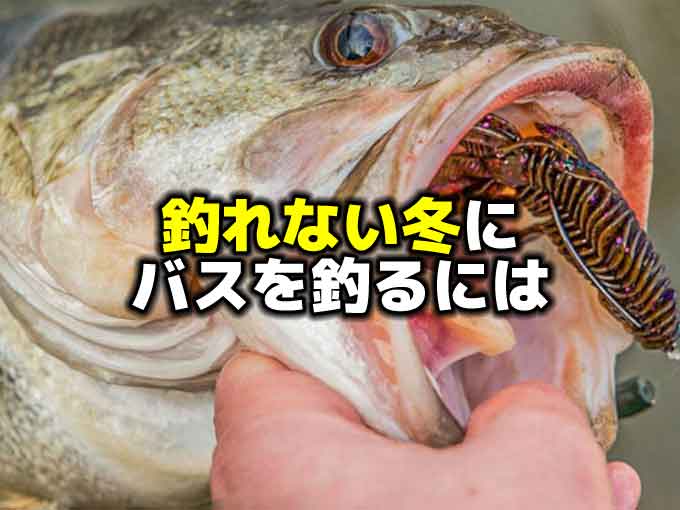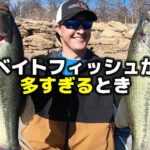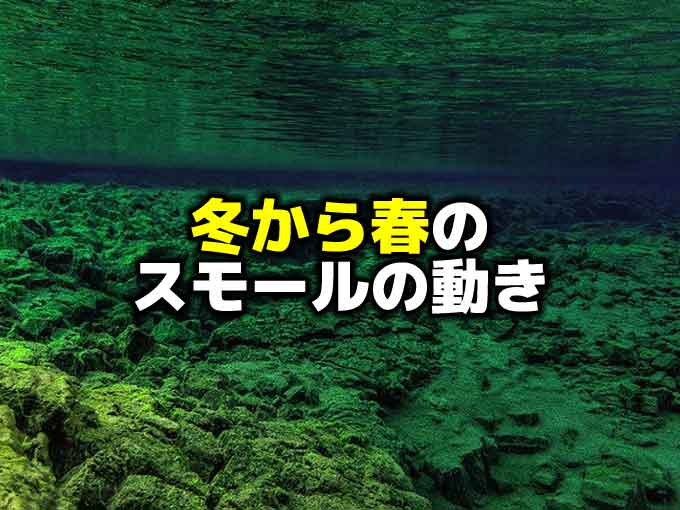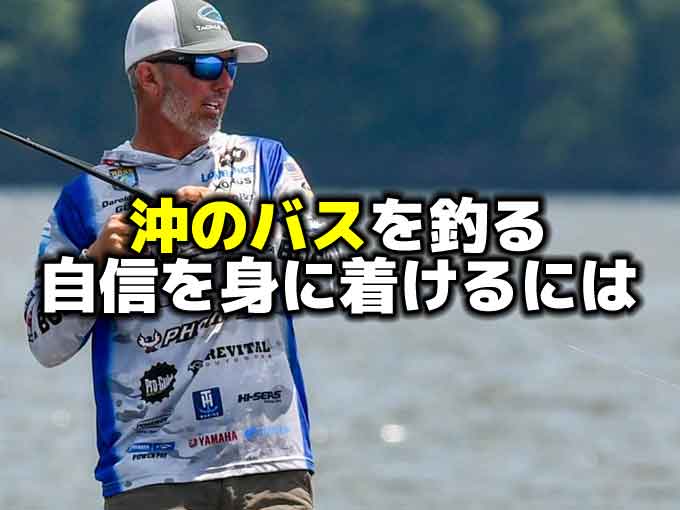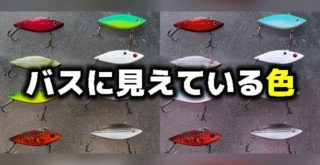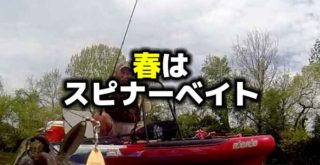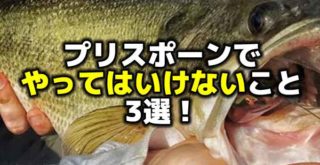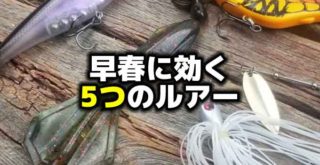春バス釣りのためのフラットエリア攻略

Photo by scout.com
こんにちは!店長の小山です!
本日は海外サイトより、”Breaking Down Flats for Spring Bass”という記事を引用してご紹介いたします。
引用先:scout.com”Breaking Down Flats for Spring Bass” By WALKER SMITH 04/23/2013(海外サイトです)
バス釣りにおいて、春というのは特別な季節だと思います。長いオフシーズンがようやく終わり、人間が釣りをしやすくなっていく季節であると同時に、バスたちも越冬を終え、スポーニングを意識したバスはオカッパリでも手の届く範囲に上がってくるのです。
「今年こそ春のデカバス釣ってやるぞー!」と思う人もいれば、「今年もあのポイントであれを投げればデカいのが釣れるはず!」なんていう計画を立てる人もいるでしょうね。
さてそんな春のバスを攻略するのに忘れてはならないのが、「フラットエリア」の存在です。
春バスを攻略するということは、要するにフラットエリアを攻略するということであると言っても過言ではないほど、重要なエリアですよね。
この記事では、そんな春のバスを釣るためのフラットエリア攻略について重要な4つの事柄を解説してくれています。
フラットエリアの釣りがイマイチ苦手だな、という方はぜひ読んでみてください。
フラットエリアを攻略する4つのキー
Many bass anglers look forward to spring bass fishing throughout the entire year. When spring finally arrives and bass begin roaming flats in search of warmer water and bedding areas, it gives us the ability to chase after them with a plethora of moving baits—the key word being “chase”.
Bass fishing flats isn’t as straight forward as it may sound. Instead of wandering around shallow water areas hoping to luckily intercept a big bass, LIVETARGET pro Stephen Browning considers 4 key elements that can turn an ordinary day into an extraordinary one.
多くのバスアングラーは春のバスフィッシングを楽しみにしています。いよいよ春が到来し、バスが暖かい水とベッドのエリアを探してフラットを回遊し始めると、多くのムービングベイト(巻き物系ルアー)を追いかけるようになります。キーワードは「チェイス」。
フラットでのバス釣りは、言うほど容易ではありません。 LIVETARGET Luresのプロスタッフ、ステファン・ブローニングは、普通の日を特別な日に変えることができる4つの重要な要素を考慮しています。
- ストラクチャーとカバー
- 天気
- プレゼンテーション
- タイミング
1.ストラクチャーとカバーに注意を払う

Photo by scout.com
In many fisheries, the majority of flats are adorned with some sort of depth change. Whether it is a small, 2-foot depth change or a large drain resulting from fluctuating water levels, Browning considers these small variations essential when dissecting flats.
“You absolutely have to use your electronics to find the depth change—that is always my first step,” Browning said. “Start out at the very beginning of the flat and try to find a small drainage ditch that leads into it. You need to find the highway the fish are using to travel to and from the flat.”
He also makes it a point to monitor the bottom composition. Bass don’t prefer muck-covered bottoms, especially in the spring. As they prepare to spawn, they will be on the lookout for hard bottom areas, such as sand or gravel. Without a hard bottom, your search for big bass will be hindered.
His next order of business is finding any available cover on the flat such as stumps, rock piles or submerged vegetation. As he makes his way onto the flat, Browning uses a wide variety of search baits to simply feel for cover. Whenever he notices his bait deflect off of something, he takes advantage of his electronics.
“Every time I feel my bait hit something, I make sure to enter a waypoint on my graph,” Browning said. “This helps me fish more efficiently when I come back to it. Instead of bombing casts to low percentage areas, I’m able to pinpoint exactly what I’m casting to. Sure, bass will roam around on these flats and you can catch those fish, but they’d much rather be snugged-up to some type of cover.”
多くのフィールドでは、大部分のフラットにはある種のストラクチャー(地形変化)が存在しています。2フィート程度の小さな深さの変化であろうと、水位を調整するための大きな導水管であろうと、ブローニングはこれらの小さな変化がフラットの攻略には不可欠と考えています。
「魚探を使って深みの変化を絶対に見つける必要があります。これは常に私の第一歩となります。」ブローニング氏は言います。「フラットをサーチし始めるには、そこに通じる小さな導水管を見つけようとしてください。魚がフラットから出入りするために使用している「道」を見つける必要があります。」
彼はまた、ボトムの質をつきとめることも重要視しています。バスは、特に春にゴミで覆われたボトムを好みません。彼らはスポーニングの準備として、砂や砂利などのハードボトムを探します。ハードボトムがなければ、大きなバス見つけるのはうまくいきません。
彼の次の作業は、スタンプ、石積みまたは水面下の水生植物のようなフラットにある利用可能なカバーを見つけることです。フラットに向かう途中で、ブローニングは単にカバーを探すためだけに広範囲にサーチベイトを使います。ルアーが何かに当たったなと気づくたびに、彼は魚探で確認します。
「ルアーが何かに当たったと感じるたびに、魚探にウェイポイントを入力(マーキング)するようにしています。」ブローニング氏は言います「これによってそこに戻ったときにより効率的に釣りをするために役立ちます。確率の低いキャストをしまくるのではなく、キャストする方向を正確に把握することができます。確かに、バスはこれらの岩場の周りを回遊しますし、それらの魚を捕まえることもできますが、だいたいはカバーにぴったりついていますのでね。」
2.必要な2つの条件

Photo by scout.com
When he’s looking for productive bass fishing on flats, Browning has noticed two key conditions that are essential for his success—wind and direct sunlight. Although one or the other is sufficient for big bass, both of the conditions combined can lead to some huge catches.
“A really bright, sunny day really makes spring bass jump onto the flats,” Browning said. “They’re not always up there to feed, either. Most of the time they’re just searching for warm water.”
Wind is also critical as it churns the water and increases oxygen levels. Whenever there is an increase in the oxygen level, both the bass and baitfish become more active and easier to find.
“Catching fish on moving baits is always easier with wind,” Browning said. “It lets the bass use cover as a current break and ambush point. They’ll sit on the downwind side of a stump and just wait for a group of shad to get blown by. The fish get positioned better which makes them easier to pinpoint.”
On bright, sunny days, Browning turns to 3 specific baits. If he notices a lack of wind, he’ll throw a Z Man Original Chatterbait Elite on a 7-foot medium-heavy St. Croix Legend Extreme paired up with a 6.4:1 Lew’s Team Gold Speed Spool Casting Reel and 16-pound Gamma Edge Fluorocarbon.
If there’s a stiff breeze blowing, he covers water with a Koppers LIVETARGET Crawfish Squarebill Crankbait and a Koppers LIVETARGET Golden Shiner Vibration Trap, both on a 6-foot, 10-inch medium-action St. Croix Mojo Glass Crankbait Rod teamed with a 6.4:1 Lew’s BB-1 Speed Spool Casting Reel.
彼がフラットで有効なバス釣りパターンを探しているとき、ブローニングは風と直射日光という成功に不可欠な2つの重要な条件に気づきました。ビッグバスを釣るにはどちらか一方でも十分ですが、両方の条件を組み合わせることでさらなるビッグウエイトにつながる可能性があります。
「本当に明るく、晴れた日は、春のバスはフラットに飛び散るようになります。」ブローニングは言います 「彼らはいつも餌を摂るためにそこにいるわけでもない。ほとんどの場合、彼らは暖かい水を探しているだけです」
風もまた水を掻き回し、酸素レベルを高めるので、重要です。酸素レベルが上昇すると、バスとベイトフィッシュの両方がよりアクティブになり、見つけやすくなります。
「ムービングベイト(巻き物系ルアー)で魚をキャッチすることは、風があればいつでも簡単に行えます」とブローニングは言いました。「バスは流れをさえぎる、待ち伏せ地点としてカバーを利用します。彼らは、スタンプの風下側に位置取り、シャッドの群れが吹き飛ばされてくるのを待つだけです。魚の居場所をピンポイントで特定しやすくなります。
明るく晴れた日に、ブローニングは3つの特定のルアーを見据えます。風がないことに気づいたら、7フィートのミディアムヘビークラスの「St. Croix Legend Extreme」ロッドに、6.4:1の「Lew’s Team Gold Speed Spool」リールと16ポンド・ガンマエッジフロロカーボンで「Z Man Original Chatterbait Elite」(チャター)を投げます。
風が吹いている場合は、6フィート10インチのミディアムアクションの「St. Croix Mojo Glass Crankbait Rod」ロッドに6.4 :1 の「Lew’s BB-1Speed Spool」リールで「Koppers LIVETARGET Crawfish Squarebill Crankbait」(クローフィッシュ・スクエアビルクランク)と「Koppers LIVETARGET Golden Shiner Vibration Trap」(ゴールデンシャイナー・バイブ)でエリアをカバーしています。

3.プレゼンテーションの重要性
Regardless of the conditions, Browning usually begins his approach focused on the depth change. Even if it’s just a small depression in the middle of the flat, bass will use it as a travel route. Using this method, he’s noticed 2 presentations that work better than others.
“If the flat is laid out correctly, I really prefer to parallel any available break lines,” Browning said. “Even if the bass aren’t particularly active, they’ll slide off the flat and sit on those break lines.”
You’ll also find him throwing his bait onto the flat and retrieving it towards deeper water. For instance, if the average depth of the flat is 3 feet, it’s not uncommon to see his boat sitting in 6 to 8 feet of water. In a way, this gives him the best of both worlds.
“This presentation lets me make long casts onto the flat to pick off the more aggressive fish while also allowing me to target the more inactive fish that may be suspended along the break line,” Browning said. “It’s a good way to fish for two different types of fish.”
条件に関係なく、ブローニングは通常、水深の変化に焦点を当てたアプローチを開始します。たとえそれがフラットの真ん中の小さな落ち込みであったとしても、バスはそれを回遊ルートとして使用します。この習性を使って、彼は他のものよりも優れた2つのプレゼンテーションに気付きました。
「そのフラットが何の変化もないまっ平らな感じならば、ブレイクラインと並行にさせればいいんです」とブローニング氏は言います。「バスが特に活発ではないとしても、フラットからズレて来て、そのブレークラインに居座ります」
彼はまた、ルアーをフラットに投げ、ディープに向かってそれをリトリーブさせることもあるようです。例えば、フラットの平均深さが3フィート(0.9メートル)の場合、彼のボートが6〜8フィート(1.8~2.4メートル)の水深にポジションしているのは珍しいことではありません。ある時には、これは彼に両方の世界の最高を与えます。
「このプレゼンテーションはブレイクラインに沿ってサスペンドしているであろう低活性なバスをターゲットとしつつ、よりアグレッシブなバスを狙い撃ちにするためにフラットの上へロングキャストをします。」ブローニング氏は言います 「2種類の魚を釣るには良い方法です」
4.タイミングは大きな問題です
Many of us consider early spring mornings to be the best time to draw a strike from a big bass. While Browning doesn’t necessarily disagree, he’s found flats to be most productive during a totally different timeframe.
“Early in the morning is good, but the early afternoon is the prime time for targeting flats,” Browning said. “During the springtime, that’s usually the warmest period of the day, which is when the bass will flock to these areas. If I’m fishing during the spring and notice my temperature gauge bump up a couple degrees, you can bet I’ll be headed towards a nearby flat.”
If he fishes a flat thoroughly without getting a quality bite, Browning doesn’t just give up on it. Many times, after letting the area rest for an hour or two, he’ll revisit it. Bass move onto flats in short spurts throughout the day, so never get discouraged if you have a slow start.
“Ideally, I want to find several places where I can establish a pattern and rotate areas throughout the day,” Browning said. “You may only get one bite at a time, but more times than not it’s a big bite. If you have enough areas, you can have a fat sack at the end of the day.”
When you’re on the water this spring, don’t just pass by those light blue areas on your GPS map. Flats offer some of the best fishing of the spring and if you follow Browning’s advice, you’ll probably end up using a few more “sick” days than anticipated.
私たちの多くは早春の朝が大きなバスからバイトを引き出す最良の時間だと考えています。ブローニングは必ずしも否定しているわけではありませんが、まったく異なる時期にフラットが最も生産的であることがわかりました。
「早朝はグッドですが、しかしフラットのプライムタイムは午後イチです。」ブローニング氏は言います「春の間、それは通常、日の最も暖かい時間帯です。そして、これらのエリアにバスが集まる時間帯でもあります。私が春に釣りをしていて、温度計が数度上がったことに気づいたら、私は近くのフラットに向かうだろう」
フラットで釣りをしていてもいい感じにバイトが出ない場合、ブローニングは単にあきらめるわけではありません。多くの場合、1〜2時間休憩した後、再訪するでしょう。バスは一日を通して短いスパンでフラットに移動しますので、スロースタートになってしまった場合でも(朝イチで釣れなくても)絶対に落胆しないでください。
「理想的には、パターンを確立し、1日を通してローテーションさせることができるいくつかのエリアを探したいと思います」と、ブローニング氏は言います。 「1回の移動に1つのバイトしか得られないかもしれないが、多くの場合はビッグフィッシュのバイトでしょう。エリアが十分な広さを持っているなら、一日の終わりにはビッグウエイトを持つことができます。」
今春、あなたが水上にいるときは、GPSマップ上の明るい青色の領域(シャローの色)を素通りしないでください。フラットは春の最高の釣りを提供し、ブローニングのアドバイスに従えば、予想以上に「ズル休み」の有給休暇をいくつか使うことになるでしょう。

いかがでしたか。
フラットの攻略法はイメージできたでしょうか?
私はもう、この記事を書きながら野尻湖のフラットのことばかり想像してしまいました(笑)
本当に体に悪いです(笑)
野尻湖はハイランドレイクらしい、ドン深地形が多いものですから、シャローフラットが少なく、ディープレンジまで緩やかに落ちてしまうんです。
でも、あるんですよね、地形変化って。
その時期になると広大なフラットの中にポツンとある地形変化にバスは集中します。集中と言っても、同じバスがずーっと居座り続けるというよりは、通りすがりのバスがそこで必ず立ち止まるようなスポットになるので、一日中釣れ続けるポイントになるイメージになるんですよね。
木崎湖にも、フラットエリアの小さな地形変化はもちろんあります。
そんな地形変化は野尻湖や木崎湖にしょっちゅう通うことのできない遠征組の皆さんには無縁かと思われるかもしれませんが、野尻湖釣具店で扱っているマップがあれば大丈夫です。
詳しくは当店のマップ売場をご覧ください。野尻湖・木崎湖攻略をより楽しくするマップが充実しております♪
湖の地形変化をつかんで、より質の高い攻略をお楽しみくださいね!
それでは、また。
毎度ありがとうございます!









